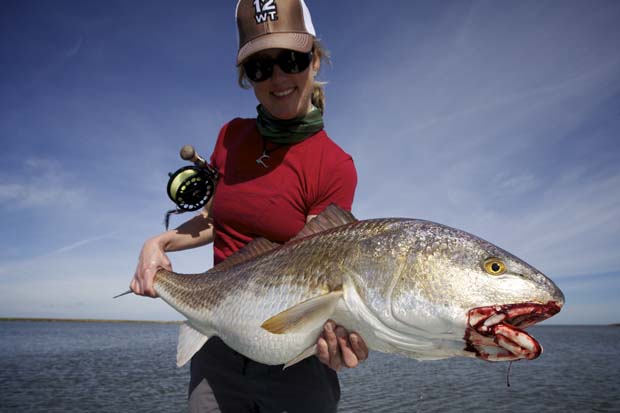Reds are the perfect target for the fly angler
[dropcap]A[/dropcap]s shown in the video, these reds are likely congregating in a pre-spawn ritual. Spawning usually takes place from mid-August to mid-November, often near tidal inlets. Drums are known to make a characteristic drumming noise during spawning. The larger adult reds, like those being caught in this video, spend most of their time in continental shelf waters. Adult drums travel back into estuaries and shallow waters to spawn.
Reds can also tolerate wide ranges of salinity and temperatures
Females can produce one-half to two million eggs per season with each egg measuring approximately 1.0mm in diameter. Eggs hatch at approximately 28-30 hours after spawning resulting in larvae that are about 6-8 mm standard length. These larvae are transported into estuaries via currents before settling onto seagrass beds. Juveniles and sub-adults typically stay in bays and estuaries until age three to four at which time they leave the estuary and join mature adults in coastal waters.
Source: Florida Museum of Natural History – Ichthyology Department . . .
Video shot Pensacola, West Coast of Florida
[youtube id=”uzsdNsmCVfs” width=”620″ height=”360″]


